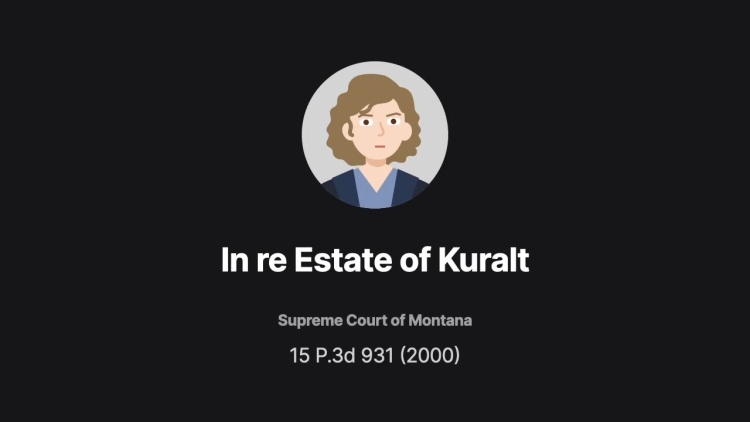In re Estate of Kuralt
Montana Supreme Court
15 P.3d 931 (2000)

- Written by Christine Raino, JD
Facts
In 1968, Charles Kuralt, a well-known journalist who had been married to Suzanne Baird (plaintiff) for six years, started an affair with Patricia Elizabeth Shannon (defendant). Without Baird ever learning of the affair, Kuralt remained in contact with Shannon and financially supported her and her family until he became suddenly ill and died unexpectedly on July 4, 1997. During their affair, Kuralt purchased a 20-acre lot near Twin Bridges, Montana where he and Shannon built a cabin. Kuralt later purchased two adjoining lots, resulting in a combined lot of approximately 90 acres. On May 3, 1989, Kuralt executed a holographic will that bequeathed all of his real and personal property in Montana to Shannon. Baird had no knowledge of the holographic will and on May 4, 1994, Kuralt executed a formal will that revoked all prior wills and made no gifts to Shannon. Then, on April 9, 1997, Kuralt deeded the 20-acre lot in Montana to Shannon as a disguised purchase by providing her money for the purchase price prior to the sale. Kuralt planned to deed the other two Montana properties to Shannon in a similar transaction in September 1997. However, Kuralt was hospitalized on June 18, 1997, on which date he wrote a letter to Shannon enclosing checks for $8,000 and $9,000 and stated that he would have his attorney make sure Shannon inherited the remaining property in Montana, “if it comes to that.” Shannon filed a Petition for Ancillary Probate seeking to probate the June 18, 1997 letter as a holographic codicil to Kuralt’s formal will. Kuralt’s estate (objector) opposed Shannon’s petition and the district court granted partial summary judgment for the estate. Shannon appealed to the Montana Supreme Court which reversed and remanded the case to resolve disputed issues of fact. Following an evidentiary hearing, the district court determined that the June 18, 1997 letter was a valid holographic codicil to the formal will. Kuralt’s estate appealed that decision to the Montana Supreme Court.
Rule of Law
Issue
Holding and Reasoning (Trieweiller, J.)
What to do next…
Here's why 899,000 law students have relied on our case briefs:
- Written by law professors and practitioners, not other law students. 47,000 briefs, keyed to 994 casebooks. Top-notch customer support.
- The right amount of information, includes the facts, issues, rule of law, holding and reasoning, and any concurrences and dissents.
- Access in your classes, works on your mobile and tablet. Massive library of related video lessons and high quality multiple-choice questions.
- Easy to use, uniform format for every case brief. Written in plain English, not in legalese. Our briefs summarize and simplify; they don’t just repeat the court’s language.





